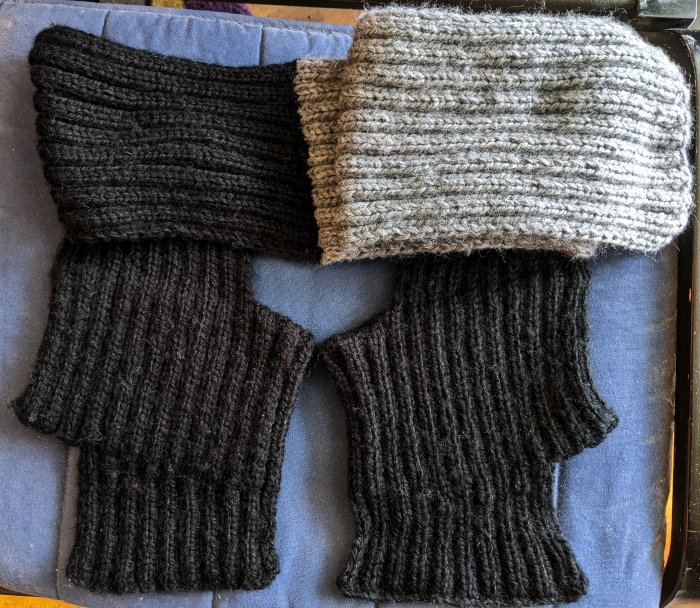Scarves with pockets are one of those winter items which are always nearly useful, but never quite there. The pockets are typically patch pockets, so not quite ergonomic. They have a built-in conflict, too: if you want to put your hands in the scarf pockets because your mittens aren’t keeping your hands warm enough, that means you probably can’t wrap the scarf around your throat. Which, really, means it’s not doing its primary job.
This three-ended scarf from The Shape of Knitting book solves these problems well. The scarf pockets are integrated into the scarf instead of patched on, which allows them to be angled and for the pocket openings to be at the sides, rather than the top. This makes them very comfortable and allows the wearer’s hands to be inserted in a thoroughly non-contrived way.
The wearer’s throat is kept warm by the third end: the grey extension anchored to the main scarf at the centre back neck. This may be wrapped around the front of the neck and then locked in place under the black part of the scarf, with the extension’s tail dangling over the back of the wearer’s shoulder. The third end is plenty long to be worn as snugly or as loosely around the throat as the wearer prefers. If it’s completely unwanted, it can be un-tucked and flipped away to hang down the wearer’s back.
Both the black and the grey yarn are leftover from sweaters I made the nieces for Yule, out of Hobbii’s Fluffy Day XL. This is a wonderfully soft, lightweight bulky yarn. The only real negative thing I can say about it is that it’s unfortunately 100% synthetic. I keep trying to stop using acrylic, but it always seems to be the only way to knit a lot of things economically. I’m hoping that as the world deals with climate change, we come up with new types of lower-cost fibres that aren’t derived from fossil fuels.
The knitting itself was fun (except for the long stretches where no shaping was going on). As with all the patterns in The Shape of Knitting, the instructions are clear and the technical editing is excellent. I’ve made ten patterns from this book, some of them multiple times, and I’ve never found a single error. The only hard part is that sometimes I don’t trust the instructions enough, and try an alternative because it’s “easier but does the same thing”, only to have to rip out a few rows and do it the way the book says to. Serves me right!

